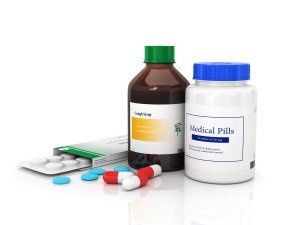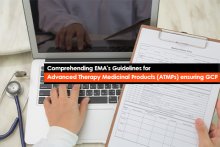Under the scope of meeting the new Falsified Medicines Directive requirements, the EMA and EC have come up with an implementation plan which introduced two new safety features to be added on the packaging of drugs by 9 February 2019. However the manufacturers based out of Greece, Belgium and Italy have an extended timeline till 9 February 2025 in order to implement the serialization guidelines as they already feature similar requirements on their current drug packages.
The key objective behind introducing these new features is to ensure that the quality of the drug is not compromised and patients are protected from falsified medicines which may consist of erroneous dosage or active ingredients that could put patient’s health at potential risk. The new regulation demands the drug manufacturers to add a Unique Identifier (UI) and an Anti-Tampering Device (ATD) to the packaging of most ‘centrally authorized products’.
Unique Identifier
The Unique Identifier should be encoded in the barcode combining the following features:
- Serial Number
Serial number is a 20-character alphanumeric number, assigned separately to individual product. It should be secure enough with a probability of guessing only once in 10,000 times, for which specific randomization rules can be followed while generating the serial number. - Product Code
Product code should be generated in order to identify:- name of drug
- common name
- pack size
- pharmaceutical form
- pack type
- strength of the drug
- National Reimbursement Number
- Batch Number
- Expiry Date
The components mentioned above are required to be printed on the package containing the Unique Identifier in human readable format, placed next to the 2-D barcode.
Anti-Tampering Device
Anti-tampering device works as a safety feature that helps to identify tampering instances with the drug package. Availing this feature, the device is verified for its authenticity when the medical product is distributed in the market. During the verification process, the components printed on the package and ones encoded in the barcode are matched to identify any kind of dissimilarities in the product information.
Corresponding to the addition of new features, EMA has released an implementation plan with updated submission timelines for stakeholders to be able to comply with latest mandates. The agency has also updated
- the Product Information Template (PIT) integrating the latest updates affecting the medical product information
- Quality Review of Documents (QRD) template to create the Unique Identifiers
In Conclusion
Subsequent to the new implementation plan and updated labeling requirements as per revised PIT, stakeholders should now follow current guidelines during the drug packaging. Companies are required to add Unique Identifiers to the products already approved by the agency and submit the updated product information in accordance with the revised QRD template before 9 February, 2019. Despite the fact that the deadline is three years away, early into the game may help manufacturers fall in line with regulation requirements. To update these features on your drug packaging in a cost-effective manner, get in touch with a global regulatory partner.





